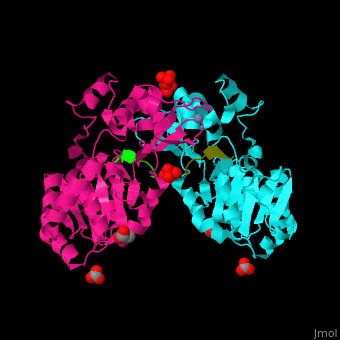Function
Histone deacetylase (HDAC) catalyzes the removal of acetyl group from ε-N-acetyl lysine in histones[1]. HDAC contains Zn. DNA expression is regulated by acetylation and de-acetylation. SAHA is a common inhibitor of HDAC. HDAC are classified according to their domain organization into 4 classes.
- HDAC class I are homologous to yeast Rpd3.
- HDAC class II are homologous to yeast HdaI.
- HDAC class IIa lack enzymatic activity[2].
- HDAC class III called sirtuin - (Silent Information Regulator) (SIRT) are NAD-dependent HDAC. This protein is bifunctional and can act as a deacylase or as mono-ADP-acetyltransferase. [3].
- HDAC Rpd3 belongs to class I and is involved in transcriptional repression [4].
- HDAC Clr (Cryptic Loci Regulator) is responsible of deacetylation of Lys residues at the N-terminal of histones .
For HDAC8 see - Histone deacetylase 8 (HDAC8).
For additional details see
Relevance
HDAC inhibitors are used in cancer therapy[5]. Sirtuins play a role in cancer, metabolic activity and neurodegenerative diseases[6]. HDAC inhibitor SAHA or Zolinza (Vorinostat) is used in the treatment of cutaneous T cell lymphoma[7].
Structural highlights
The biological assembly of Human sirtuin-3 is . The between the 2 domains of SIRT3 - a large Rossman fold, NAD-binding domain and a small Zn-binding one)[8]. Water molecule shown as red sphere.
3D Structures of histone deacetylase
Histone deacetylase 3D structures

